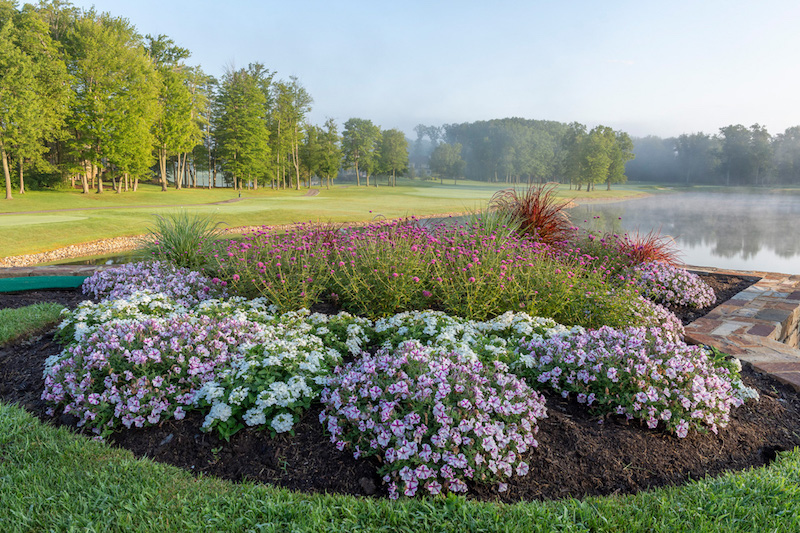The Single Strategy To Use For Hilton Head Landscapes
The Single Strategy To Use For Hilton Head Landscapes
Blog Article
How Hilton Head Landscapes can Save You Time, Stress, and Money.
Table of ContentsThe Only Guide to Hilton Head LandscapesHilton Head Landscapes Can Be Fun For EveryoneAll About Hilton Head LandscapesNot known Details About Hilton Head Landscapes Things about Hilton Head LandscapesThe 6-Second Trick For Hilton Head LandscapesThe 7-Second Trick For Hilton Head Landscapes
Line creates all forms and patterns and can be utilized in a variety of means in the landscape. Line in the landscape is developed by the side in between 2 materials, the synopsis or silhouette of a form, or a lengthy straight feature. Lines are an effective device for the designer due to the fact that they can be made use of to develop a limitless selection of shapes and forms, and they control movement of the eye and the body.

Lines can have one or even more attributes, such as those described listed below, however they commonly offer various purposes. Number 1. Lines in the landscape - Landscaping bluffton sc. The homes of lines determine exactly how individuals reply to the landscape, both mentally and literally. Straight lines are architectural and powerful; they create an official personality, are typically connected with an in proportion style, and lead the eye straight to a centerpiece.
The smart Trick of Hilton Head Landscapes That Nobody is Discussing
Curved lines produce a casual, natural, relaxed character that is associated extra with nature and unbalanced balance. Bent lines relocate the eye at a slower speed and add enigma to the room by developing concealed views.
Vertical lines in the landscape consist of high, slim plant material, such as trees, or tall frameworks, such as an arbor or a bird home on a pole. Horizontal lines move the eye along the ground plane and can make an area really feel larger. Reduced lines are more restrained and create a sensation of remainder or repose.
All about Hilton Head Landscapes
Low lines are developed by low yard walls, sidewalks, and brief bushes. Lines are utilized to draw types on a strategy. In plan sight, they specify plant beds and hardscape areas. Lines are also developed by the vertical kinds of developed functions and plant product. There are three key line types that develop type in the landscape: bedlines, hardscape lines, and plant lines.
Bedlines attach plant product to the residence and hardscape since the eye adheres to the line, moving the stare via the landscape. Hardscape lines are created by the side of the hardscape, which defines the built structure. Line can additionally be created by lengthy and narrow materials, such as a fence or wall surface.
Top Guidelines Of Hilton Head Landscapes
Kind is discovered in both hardscape and plants, and it is normally the dominant aesthetic aspect that spatially arranges the landscape and frequently identifies the style of the yard. The kind of structures, plant beds, and yard ornaments likewise identifies the general kind style of the yard. Formal, geometric types include circles, squares, and polygons.
Plants create form in the yard via their lays out or silhouettes, yet form can additionally be specified by a void or unfavorable space between plants - landscaping hilton head sc (https://cinnamon-ferret-ktw2xm.mystrikingly.com/blog/transform-your-outdoor-space-with-hilton-head-landscapes). Circles can be cycles, or they can be split into fifty percent circles or circle sections and integrated with lines to develop arcs and tangents
The Basic Principles Of Hilton Head Landscapes
Circles can additionally be stretched right into ovals and ellipses for even more variety and passion. Circles are a solid style form since the eye is always drawn to the center, which can be utilized to stress a focal point or connect various other kinds. Number 2. Circular types in hardscape and grass panels.
The square kind can additionally be segmented and previously owned repetitively to create a grid pattern. Unlike circles, squares are more powerful on the sides, which can be lined up or overlapped to produce one-of-a-kind patterns and more complex kinds. Polygons are many-sided forms with straight edges. Triangles, as an example, are three-sided polygons.
Twisting lines typically mimic the natural course of rivers or streams and can be called smooth lines with deeply rounded wavinesses. Twisting lines (Number 3) work well for pathways, plant bedlines, and completely dry stream beds. Twisting lines can add passion and secret to a yard by leading visitors around corners to find new views and areas.
Hilton Head Landscapes Things To Know Before You Get This

Figure 5. Fragmented edges: my blog stepping rocks in path. Type is the most enduring top quality of a plant (landscapers in bluffton sc). https://www.tripadvisor.in/Profile/h1tnhdlndscps. Usual plant types are well established and standard, as kind is the most constant and identifiable feature of plants. Form can additionally be created with the massing of plants, where the overall mass develops a various form than a specific plant.
A very contrasting type must be used with careone or 2 job well as a centerpiece, yet way too many develop disorder. All-natural plant forms, instead of over-trimmed kinds, must develop the mass of the composition. The importance of general type is basically dependent on the watching perspectivethe kind of a tree can show up quite different to an individual standing under the canopy versus seeing the tree from a range in an open field.
A Biased View of Hilton Head Landscapes
Plant forms also create and define deep space or open rooms between the plants, developing either convex or concave types in the gaps. High-arching tree branches commonly develop a concave open room under the branches, and a round cover with reduced branches fills up the space to develop a convex type in the open space under the tree.

Report this page